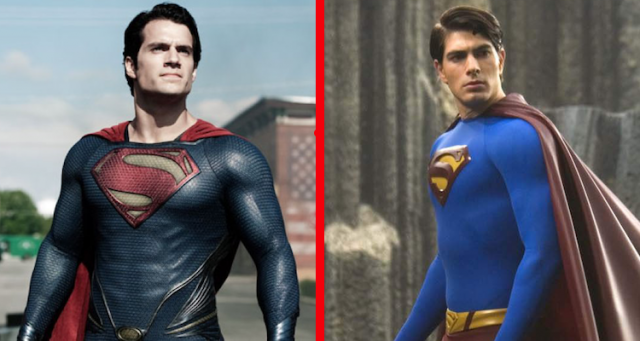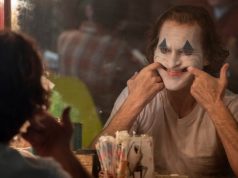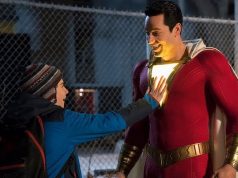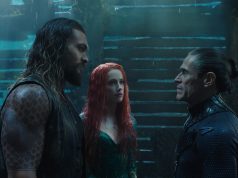
Zack Snyder’s “Man of Steel” arrives this week, with fans hoping it is more like Zack Snyder’s “Dawn of the Dead” (i.e., pretty good) than Zack Snyder’s “Sucker Punch” (i.e., the worst thing ever devised by man). What’s already certain is that the Superman movie franchise definitely needs a boost. After “Superman” and “Superman II” served as the prototypes for the superhero movie — a theretofore non-existent genre — the series was undone by two miserable sequels, then surpassed by johnnies-come-lately like Batman, Spider-Man, and the X-Men.
When Brandon Routh put on the tights for 2006’s “Superman Returns,” there were high hopes that the godfather of all superheroes would reclaim his place at the head of the table. The film got good reviews and earned $376 million worldwide … and was considered a disappointing flop. (The fact that it cost $270 million to make certainly did not help.) No sequel was greenlit. Brandon Routh went back to the obscurity whence he was plucked, and other heroes continued bringing in the big money.
Warner Bros., DC Comics, and all other involved parties hope that THIS time, things will be different. With Henry Cavill in the Spandex, successful populist filmmaker Snyder behind the camera, and Christopher Nolan serving as producer, THIS time the reboot is gonna stick. It won’t be like the last time.
But apart from the unprofitability, would it really be so bad if “Man of Steel” were like “Superman Returns”? I re-watched it for the first time in seven years just a few nights before I saw “Man of Steel,” prepared to be sheepish about the rave A-minus review I wrote in 2006. But sheepish I was not! “Superman Returns” remains a rousing, contemplative, satisfying adventure. In fact, there are some things it does better than “Man of Steel.”
The reverse is also true, though, and the perfect Superman film might be a combination of the two. Here are some comparisons between these all-our-hopes-are-pinned-on-you reboots, for your edification and pleasure.
Things “Man of Steel” Does Better Than “Superman Returns”
– The action (quantity). One of the chief complaints people had about “Superman Returns” was that it was too introspective and didn’t have enough flying, saving, fighting, and so forth. There is definitely no shortage of mayhem in “Man of Steel,” starting with the opening sequence on the doomed planet Krypton and continuing through the climactic, Metropolis-ruining finale. (Metropolis, Gotham, and New York must be the three most frequently destroyed cities in moviedom.)
– The sci-fi. This aspect of the Superman story often gets overlooked. He’s an alien! This is science-fiction! With its talk of “world engines,” singularities, terraforming, and other such jargon, “Man of Steel” might be the sci-fi-est superhero film since “Green Lantern.” (I realize this won’t be considered a favorable comparison.) That doesn’t make it better, necessarily, but it’s the first time a Superman film has really even tackled that side of it.
– The villain. Lex Luthor might have been Superman’s greatest foe in the comics at some point, but in the movies he’s never been more than an amusing nuisance. That was especially true in “Superman Returns,” where Kevin Spacey couldn’t overcome the character’s basic ineffectualness. General Zod, on the other hand — a Kryptonian with powers like Superman’s — now we’re talking. Michael Shannon is appropriately menacing, and “Man of Steel” presents Zod and his cohorts as a legitimate challenge to Superman’s authority (though they are no match for his heroic jawline and smoldering eyes).
– Lois Lane. Human sleeping pill Kate Bosworth is nothing compared to the feisty, dynamic, perpetually endearing Amy Adams. I will hear no argument on this subject — nor, I suspect, will anyone try to make one.
Things “Superman Returns” Does Better Than “Man of Steel”
– The action (quality). Like I said, there’s plenty of action in “Man of Steel.” It eventually grows repetitive, in fact, not to mention destructive to the point of tackiness. (Conservative estimates put the civilian death toll in “Man of Steel” at around 800,000,000.) The super-speed with which the characters zip around often renders them video-game-like. “Superman Returns” may have less action, but the action it does have is superb. The first major sequence, with Superman saving the airplane/space shuttle with Lois onboard, is breathtaking, and everything that happens in the film looks clear, real and human.
– Demonstrating why the world needs Superman. Being an origin story, “Man of Steel” is primarily concerned with getting the pieces into place. He’s not universally trusted and beloved at first. No one even calls him “Superman” until the movie’s nearly over. “Superman Returns” is a sequel, so the foundation has already been laid. But even better, it begins with Superman having been gone for a few years, giving Metropolis — and us — a chance to miss him. The world’s appreciation for its savior is stirring, and it taps into our own nostalgia for this character we’ve known all our lives.
– It feels more like a “Superman movie.” Though the aging or deceased cast members had all been replaced, “Superman Returns” was nonetheless meant to fit in with the Christopher Reeve films (or at least the first two; it pretended, as have we all, that “Superman III” and “Superman IV: The Quest for Peace” did not exist). So it used John Williams’ iconic musical themes, played up Clark Kent’s dorkiness, and brought Lex Luthor and kryptonite back into the equation. It even incorporated old footage of Marlon Brandon as Jor-El. “Man of Steel” carries over none of the details from the earlier films, nor does it try to emulate their light, colorful tone. It goes in a different direction — a valid direction, yes, and one I’m curious to follow in subsequent adventures. But there’s no denying that “Man of Steel” has a different flavor. And I have to admit, I missed the lovably clumsy Clark Kent of yesteryear. Here’s hoping “Man of Steel 2” (or whatever they call it) finds a way to mesh the new ideas with some of the old magic.
— Film.com




